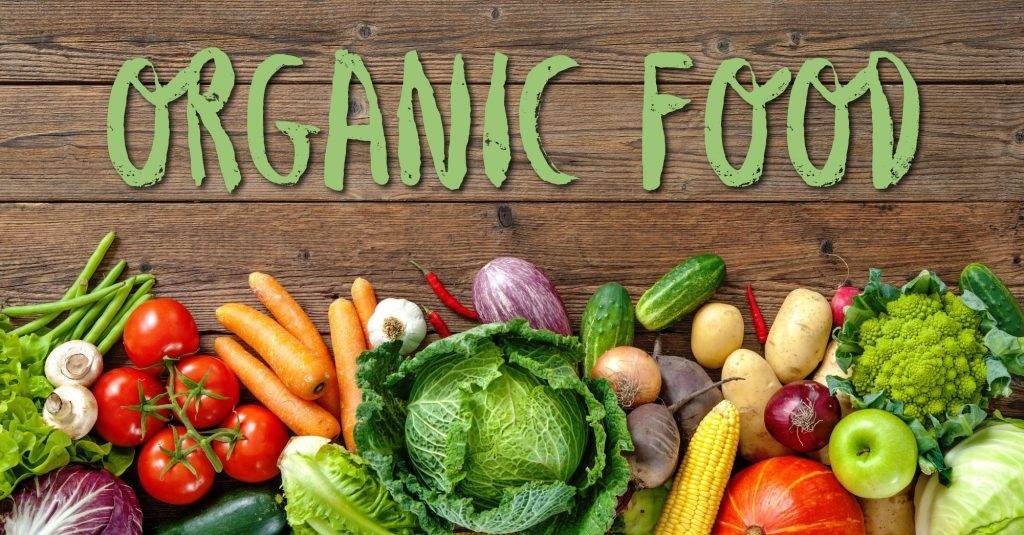Blog
Five ways to identify organic food

The traditional, regular and conventional food we eat nowadays is laden with chemical fertilizers, pesticides, larvicides, and fungicides, which are sprayed primarily to destroy any unwanted insects or toxic growth, but which inevitably lead to contamination of these ingrown foods, rendering them unfit for consumption. Organic food is a better alternative to conventionally produced food, however, most people don’t opt for it since it is more expensive.
What is Organic Food?
Organic food is cultivated without the use of synthetic chemicals such as pesticides and fertilizers
produced by humans, and it does not contain GMOs.
You might question, “Why go for organic food?” or “is organic food more nutritious?”
Well, firstly, organic food is produced by the practices of organic farming features that help in cycling
resources, promoting ecological balance, and conserving biodiversity. What is more wonderful and easy than
helping to save the planet by simply eating organic produce?
Secondly, multiple studies show that organic varieties of the same foods contain substantially more
antioxidants, vitamin C, iron, magnesium, and phosphorus than non-organic varieties. They are higher in
these nutrients and have lower levels of nitrates and pesticide residues.
With increasing focus on eating healthier and sustainable, the organic food industry has been rapidly gaining
popularity.
Fruit and vegetable manufacturers are under pressure to supply more as the organic food market grows, and
some are cutting corners. When the volumes are large, organic farming concepts are difficult to follow.
Eating healthy comes way easier when you eat organically produced food.
The vegetables and produce with spot-on colours, perfect shape, and no pests or insects might appear to be
fresh and healthy. But, it’s all a hoax!
As a consumer, these 5 tips will help you in picking good-quality organic food:
Size, Shape, and Appearance:
Organic foods are never identical in appearance; there is no such thing as an identical organic food. They are not altered for any form specifications and are left undisturbed; they are also not larger than traditional food items. So if you’re going shopping for organic vegetables and fruits, don’t pick large ones! The colour, shape, the structure of any organic food be it grains, vegetables, or fruits will never be uniform. Beware of perfectly looking produce, they might not be organic as they look.Shorter Shelf-Life and Preservative-Free:
Ideally, organically produced food should not be treated with preservatives. Organic foods have a shorter shelf life than foods processed with artificial pesticides and weedicides since they contain no preservatives and are produced using natural methods and delivered directly to our homes. As a result, these foods don’t last for long.Presence of Insects or Life:
As much as you hate insects, the sight of them on vegetables, fruits, lentils, grains, or rice is a sign that they’re organically produced and not treated with pesticides. Since the primary distinction between organic foods and commonly available food in our local supermarkets is that the latter is protected with strong chemicals to destroy any unwanted life that may sprout into it, the former which contain traces of insects or worms, indicating that it was processed using less harsh methods. You can rise the green leafy vegetables, fruits, etc with salt-water or vinegar water.Food Smell or Aroma:
Organic food has a distinct aroma and texture — in truth, it’s very potent. Since organic spices maintain their oil content, they will have a clear aroma and flavour. However, one has to extra aware and cautious since the adulterators in the food industry are getting expertise in adding synthetic aroma to food that smells just like organic ones! For this, it is essential that food testing is done in labs to ensure that only pure organic food is being supplied in the market.The Duller, the Better:
These foods aren’t polished, sprayed, or cut in any way to make them look good. These are irregularly formed, with a dull and light natural colour; hence, the old saying that foods that appear rich in colour are healthier is a myth, as the more organic and naturally grown it is, the less susceptible it is to additives.
 Admin Register
Admin Register

 Alcohol
Alcohol  Baby Care
Baby Care  Bakery, Cakes & Dairy
Bakery, Cakes & Dairy  Beauty-&-Hygiene
Beauty-&-Hygiene  Beverages
Beverages  Cleaning & Household
Cleaning & Household  Construction Materials
Construction Materials  Foodgrains, Oil & Masala
Foodgrains, Oil & Masala  Medicine
Medicine  Medicine Related Cosmetics
Medicine Related Cosmetics  Non-Veg
Non-Veg  Pesticides
Pesticides  Snacks & Branded Foods
Snacks & Branded Foods  Supplement
Supplement  Veterinary
Veterinary 